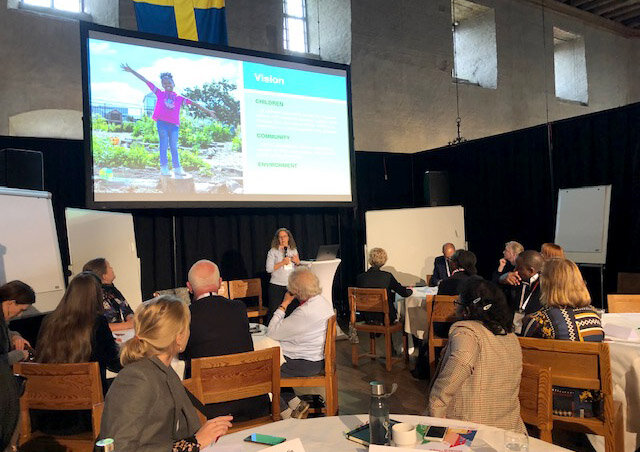Math in Your Backyard
/Do you know any children who have been spending a lot of time online lately, with distance learning? Here are a few ideas to help kids of all ages get outside—in their backyard or local green space—to play with math concepts while they enjoy the natural world and take a break from computer screens.
The creative, hands-on learning ideas below were written by our colleagues at organizations across the USA and around the world. The complete directions for each activity—and hundreds of others—are available in our free, online set of outdoor Activity Guides. These books were originally written for use in schoolyards around the world, but many of the ideas they include are equally well-suited for use close to home, in our backyards and neighborhoods. We hope you will have fun with them and will share these ideas widely!
Green Schoolyards America and our partners at the International school grounds alliance publish a set of free, downloadable books filled with ideas for outdoor learning, play, and health. This set of 250 hands-on activities and curriculum ideas were contributed by 188 organizations across the USA and around the world. CLICK HERE TO ACCESS THE BOOKS.
This article is the second installment in our series entitled, Bringing Outdoor Learning Home.
Click here to read Part 1: Explore Art in Your Backyard or Neighborhood.
Part 2: EXPLORE MATH outdoors, close to home
IMAGE © Chippewa nature center - Preschool
Springtime Math with Worms
Author: Rachel A. Larimore Consulting,
Midland, Michigan, USA
Ages: 3-5 years old
Spring evokes images of tulips, bursting tree buds, frogs calling, puddles… and worms! Children’s interest in worms is a great opportunity to extend play to include math exploration and learning.
— See Living Schoolyard Activity Guide, page 147
IMAGE © SukHprit kaur
Counting is Fun!
Author: Centre for Environment Education,
Ahmedabad, Gujarat, India
Ages: 4-7 years old
Explore colors, textures, and materials found in nature, while helping young children learn to count and understand the meaning of numbers.
— See International School Grounds Month Activity Guide, page 98
IMAGE © Juliet robertson
Tens Frame Symmetry
Author: Creative STAR Learning,
Inverurie, Scotland, United Kingdom
Ages: 5-7 years old
In this activity, children use natural materials to create symmetrical patterns that build upon what they have observed in the world around them.
— See International School Grounds Month Activity Guide, page 150
IMAGE © Maria taylor
The Nature of Arrays
Author: Nature Play SA,
Adelaide, South Australia, Australia
Ages: 5-12 years old
Explore multiplication and division concepts, and practice problem solving and reasoning skills, by arranging natural materials into sets called arrays.
— See International School Grounds Month Activity Guide, page 149
IMAGE © sharon danks
Robert’s Little Finger
Author: Naturskolan i Lund, Lund, Sweden
Ages: 6-11 years old
This activity teaches ratios and collaboration, as children work together to construct a scale model of a member of their group. At home, this idea can include siblings and/or parents.
— See International School Grounds Month Activity Guide, page 70
IMAGE © naturskolan i lund
The Secret Picture
Author: Naturskolan i Lund, Lund, Sweden
Ages: 5-18 years old
Use this enjoyable game to help children improve their vocabulary for mathematical and spatial terms, and concepts such as “over,” “under,” and “below.” At home, play this game with family members.
— See International School Grounds Month Activity Guide, page 69
IMAGE © California coastal commission
Blue Whale: An Animal of Unusual Size
Author: California Coastal Commission,
San Francisco, California, USA
Ages: 10-18 years old
Blue whales are the largest animals known to have lived on Earth. Could a blue whale fit in your schoolyard—or backyard? Learn to measure the height of a tree in your yard, and compare it to the length of a blue whale.
— See Living Schoolyard Activity Guide, page 154
IMAGE © Education outside
Calculate Rainwater Runoff
Author: Education Outside and San Francisco Public Utilities Commission, San Francisco, California, USA
Ages: 10-18 years old
In this activity, students in dry climates determine how many gallons of rainwater can be captured from their rooftop and stored in a cistern. These calculations work equally well for thinking about a school or home rooftop.
— See Living Schoolyard Activity Guide, page 166















